Basement Waterproofing
The Healthy Way
Unlike other waterproofers in New Jersey, we provide our customers with a streamlined process for all of their waterproofing needs. Our goal is to get to the crux of your home's issues. If we spot signs of water in your basement, we go right to the source of the problem, working hard to fix structural deficiencies to prevent problems like mold growth and foundation damage. We are proud to be New Jersey's one-stop shop for all of your basement waterproofing needs. New Jersey homeowners choose Healthy Way because our experts are friendly, experienced, harworking, and fully certified. We won't rest until your waterproofing problems are solved. Because we specialize in both interior and exterior waterproofing services, you won't have to worry about hiring a laundry list of contractors to correct your moisture problems. Healthy Way provides all-inclusive basement waterproofing in Farmdale, it's no surprise that New Jersey residents trust Healthy Way to make their homes more livable every day.
Service Areas
The Healthy Way Difference
At Healthy Way, we strive to set ourselves apart from the competition by offering the best basement waterproofing services in New Jersey. We won't be happy with our work until you are 100% satisfied, whether you need a thorough moisture inspection or a large-scale waterproofing project. Our basement waterproofing experts are certified, trained, and have worked on more than 4,000 repairs. They understand that your moisture problems aren't like anybody else's, which is why all of our waterproofing proposals are created specifically for your home. You won't find any "one-size-fits-all" solutions here, and we wouldn't have it any other way.
- Best warranties in the industry
- Free initial inspection
- Full-service basement waterproofing
- Mold remediation
- Foundation repair
- Water management solutions tailored to your unique situation
Once your basement waterproofing project is complete, we make it a point to keep our staff available to address any questions or concerns you may have. Our goal is your 100% satisfaction, from the moment you call our office to schedule an inspection to the time you sign off on our work.
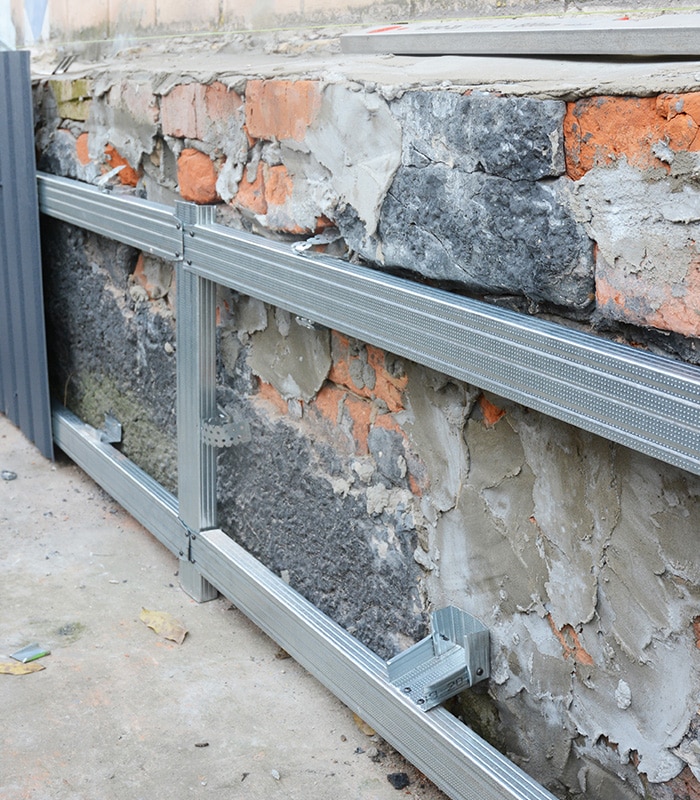



Waterproofing Services in New Jersey
With more than two decades of experience and a team of fully certified and trained waterproofing professionals, there is no waterproofing project in New Jersey that we can't handle. When not addressed, water and moisture problems can cause serious health risks for your family. We're talking buckling walls, sinking foundations, and even toxic mold. With your home's value and your family's health on the line, you must attack these problems head-on, and the best way to do that is by bringing in the Healthy Way team. Some signs of existing water problems in your home can include:
- Signs of rust or oxidation on metal fixtures
- Mildew residue
- Water stains on your foundation's walls and floors
- Erosion of your concrete
- Mineral deposits found on pipes
- Flooded landscaping after heavy rain or snow
- Pooling water around your foundation's interior
- Humidity levels above 60% in your basement or crawlspace
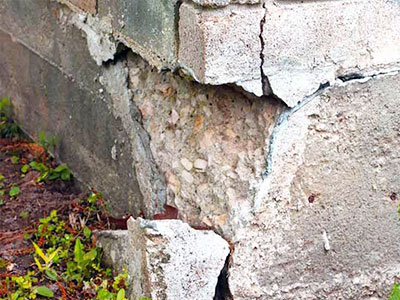

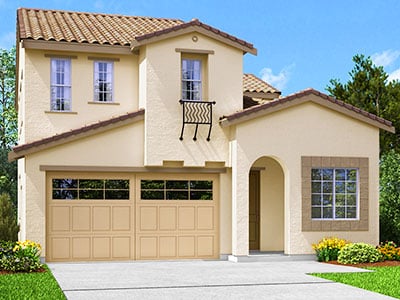
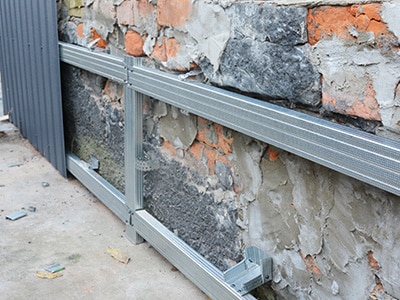
Basement Waterproofing in Farmdale
Healthy Way has been providing the most trusted, effective basement waterproofing in New Jersey since 2007. Waterproofing your basement is crucial to protecting the value of your home and the safety of your family. That is why we only employ the best, brightest, fully-certified experts, who will treat your home like it was their very own. Taking shortcuts just isn't in our nature. We use innovative technology and time-tested techniques to discover and solve your basement's water-related problems.
Because basement wall leaks and water seepage are often caused by structural issues, external waterproofing is required. While some companies only seal the interior walls of your basement, Healthy Way goes the extra mile to fix your water issues inside and out. That way, your basement leaks stop for good.
Once we find the root of the water issues in your basement, we will get to work on a custom-designed solution that will exceed your basement waterproofing needs.
Our basement waterproofing services in New Jersey help prevent the following problems:
- Mold growth, which can cause serious health hazards for your family
- Basement flooding
- Loss of valuables
- Serious water damage to your home's walls and floors
- Decrease in home value
Don't wait to address the moisture developing in your basement - call Healthy Way today for a customized solution to your water seepage problems.
What Causes Moisture in Your Basement?
It's easy to spot water leaking through a crack in your basement, but most homeowners don't know that there is a potential for water issues without heavy rains or obvious signs of standing water. At Healthy Way, we try to educate our clients on the real causes of water in your basement. Here are two of the most common reasons why you might need basement waterproofing in Farmdale:

The "Clay Bowl" Effect
It might not be evident on the surface, but many basements are built in a below-grade dip, which is surrounded by backfill. Because backfill is made up of soil that was removed during foundation digging, it creates an empty shape or "bowl" effect. Once the foundation is finished, this loose soil is placed back around the foundation. Unfortunately, soil of this consistency is more absorbent and porous than the undisturbed soil around it, which is hard-packed and less porous. When rain or thunderstorms occurs, the soil closest to your home becomes saturated, putting pressure on your basement walls.

Hydrostatic Pressure:
This kind of pressure affects homeowners with property built below the water table or on a hillside where water runs down a hill. When the soil around your foundation becomes saturated, it will expand and put intense pressure on the walls of your foundation and basement. This pressure can create cracks, giving water an easy route into your basement.
How Healthy Way Solves Your Basement Waterproofing Needs
Having a wet basement not only puts your health at risk, it lowers the value of your home and makes it more difficult to sell. The good news? We offer a number of waterproofing services and products to solve your problems fast. A few of our solutions include:
- Sump pumps
- Perimeter drainage systems
- Doorway drainage systems
- High-strength washer hoses
- Floor and wall crack repair
- Replacement windows
- Flood protection for your water heater
When you use Healthy Way for basement waterproofing in New Jersey, you can rest easy knowing that all our systems come with a written, lifetime warranty. This warranty is transferrable, meaning you can re-establish your home's value and give future owners confidence knowing that their new home is protected.
The Healthy Way Basement Waterproofing Process
Because every home is different, your basement waterproofing solution could be vastly different than that of your next-door neighbor. Many factors play a part when it comes to keeping your basement dry and safe for living. As a general rule, we approach each issue with a "prevention over repair" mindset. By taking this stance, we give our clients a more cost-effective, long-term resolution. We're not in the business of putting a "Band-Aid" on your water problem - we want to fix your issue completely, so you don't have to worry about recurring problems. Our effective basement waterproofing systems include a mix of the following strategies:

Interior Waterproofing
Interior waterproofing methods usually start with our team ensuring that any holes or cracks in your basement floors, walls, and windows are sealed properly. Sealing cracks in your basement is an important first step since this is usually the first place where water can enter your home. Our sealants keep your basement dry and help prevent more moisture from finding its way into your home. Interior waterproofing strategies like these also help lower humidity levels in your basement. While sealants and other interior waterproofing strategies help correct initial issues, they don't usually solve the underlying problem causing leaks in your basement. Those issues are most often found outside your home.

Exterior Waterproofing
Once our team is finished with your interior waterproofing, we will move to the exterior of your home. Waterproofing the outside of your home is often a more complex, nuanced goal. Because of the difficult nature of exterior waterproofing, we recommend you consult with our team of professionals before tackling the job on your own. Generally speaking, our team beings the outdoor waterproofing process by excavating the soil around your home's foundation. Once we remove the soil surrounding your foundation, our experts will apply a polymer-based sealant to any cracks we discover. This sealant is a long-term solution and should remain intact for the life of your home. While the Healthy Way team solves your outdoor moisture problems, we will also check your downspouts, to make sure they aren't clogged. An inefficient gutter system does a poor job of directing water away from your home's foundation, which can cause more moisture to seep into your basement over time.

Drainage Systems
One of the most common reasons that people need basement waterproofing in cityname is because they have a poor drainage system. A proper drainage system is paramount in keeping your basement dry and your family safe. These systems are meant to direct water away from your home and come in many forms, from French Drains to simple systems like ground soil. If you're thinking of installing a complex drainage system, save yourself some time and check the soil around your foundation first to make sure it isn't retaining moisture. If a more complex system like a sump pump is required, it's best to work with certified professionals like those at Healthy Way, to make sure your drainage system is installed correctly.
WHICH WATERPROOFING SOLUTION IS RIGHT FOR ME?
Because every home is different, it's hard to say what kind of waterproofing solution is right for your situation. Most homeowners require a combination of interior and exterior waterproofing. There are dozens of factors that come into play when it comes to waterproofing your home, so the answer to your problem may be different than your neighbor's. The good news is that Healthy Way is fully equipped to handle whatever moisture issue you're having. We will work tirelessly to make certain your basement is dry, mold-free, and safe to enjoy. That way, you can get back to living life rather than worrying about mold growth or foundation damage.
Contact UsGET IT DONE RIGHT, THE FIRST TIME
Other companies may offer temporary or partial solutions. At Healthy Way, we believe in correcting the problem completely, so you save money and have long-term peace of mind. Our goal is to fix your problem to prevent it from coming back, or we won't do the work!
If you require quality basement waterproofing, it all starts with a FREE inspection from our certified waterproofing experts. We will take as much time as you need to find your problem, develop a solution, and walk you through our process step-by-step.
Don't let water leaks and foundation damage create a dangerous environment in your home; contact the experts at Healthy Way today!
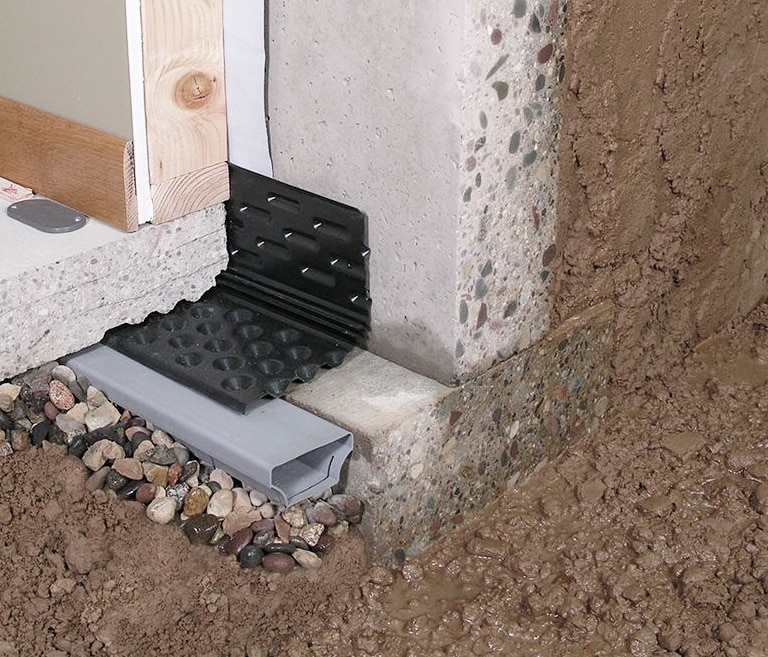
Latest News in Farmdale, NJ
Exclusive: How Safe Are LA’s Schools? Interactive Map Compares What Teachers & Students Are Reporting
Max Edenhttps://www.the74million.org/article/exclusive-how-safe-are-las-schools-interactive-map-compares-what-teachers-students-are-reporting/
As states rethink school accountability under the Every Student Succeeds Act, policymakers often overlook information that goes to the heart of what might be the most fundamental question for any parent: Does my child feel safe?Data about the real inner workings of schools, from teacher morale to academic culture to student safety, are rarely rated, and almost never reported.Los Angeles, however, conducts comprehensive school climate surveys of teachers and students and — unlike almost every other major district — m...
As states rethink school accountability under the Every Student Succeeds Act, policymakers often overlook information that goes to the heart of what might be the most fundamental question for any parent: Does my child feel safe?
Data about the real inner workings of schools, from teacher morale to academic culture to student safety, are rarely rated, and almost never reported.
Los Angeles, however, conducts comprehensive school climate surveys of teachers and students and — unlike almost every other major district — makes the full data set available to the public.
I’ve taken a slice of the data — questions pertaining to school order and safety — and placed it on a Google map so parents can quickly and easily see what students and teachers at their schools are saying. The data reflects responses from 786 district and charter schools across the city that participated in surveys given in the 2015–16 school year, the most recent available. (The district reports having “over 900” traditional public schools as well as 187 charters.)
Here are the city’s elementary and secondary schools, color-coded to reflect the responses to survey questions about school safety; you can scan and zoom below, or click here for a full-screen version that you can search by address or specific school name.
Again, to take stock of the individual survey results, click on the green, yellow. or red pin and see the pop-up window. (Click here for a full breakdown of the methodology behind the map.)
Elementary schools were coded as green/safe where less than 10 percent of students did not report feeling safe most or all of the time; schools where 10 percent to 20 percent of students did not report feeling safe were coded as yellow/somewhat safe; schools where more than 20 percent of students did not report feeling safe were coded as red/less safe.
Secondary schools where less than 25 percent of students did not report feeling safe were coded as green/safe; schools where 25 percent to 40 percent of students did not report feeling safe were coded as yellow/somewhat safe; schools where 40 percent or more of students did not report feeling safe were coded as red/less safe.
For some schools, Los Angeles reports data across several grade spans; in those cases, I averaged each observation.
At Coliseum Elementary, 45 percent of students say they do not feel safe at school and 81 percent say bullying is a significant problem.
Teachers seem to agree that things are not going smoothly — 64 percent say their discipline practices are not effective, and 52 percent say disruptive behavior is a significant problem.
Fewer teachers at Edwin Markham Middle School believe that their discipline practices are effective than just about any other school in LAUSD: A whopping 92 percent say the way they try to handle misbehavior isn’t working. Ninety-two percent of staff also say student disrespect of teachers is a significant problem (70 percent of students admit that).
Students and teachers are also on the same page regarding bullying: 77 percent of teachers and 82 percent of students say it’s a problem. Two-thirds of students at Edwin Markham say they don’t feel safe, and given everything else, it’s unfortunately easy to imagine why.
In general, the differences between neighboring schools in Los Angeles are less striking than in New York City. This may be due in part to policy, or the fact that while a significant majority of charter schools in NYC participate in the climate survey, only a sliver of LA charters do so. It’s entirely possible that charters are offering a safer option for students in LA than in NYC — but unfortunately, there’s no way for parents to know whether that’s true.
City Terrace Elementary School is, according to students and teachers, the safest and most orderly elementary school in East Los Angeles. Only 7 percent of students at City Terrace say they don’t feel safe at school, compared with 22 percent at Robert F. Kennedy Elementary School, 22 percent at Harrison Street Elementary, and 17 percent at William R. Anton Elementary School.
Some of the most disorderly and dangerous schools in Los Angeles can be found, as sadly may not be a surprise, in Watts. When you hover over the neighborhood, however, there does appear to be one bright spot: Thomas Riley High School. It’s the safest in Watts — and it specializes in serving teenage mothers.
Max Eden is a senior fellow at the Manhattan Institute, specializing in education policy. See a similar breakdown of schools in New York City, and click here to read Max Eden’s analysis of lessons he learned from compiling and mapping these data.
Get the latest news about school climate and school safety, as well as access to new interactive tools that better help parents understand their neighborhood and school district, by signing up for The 74 Newsletter.
Slam Dunk for Planned Moorestown Indoor Sports Complex
Lauren Burgoonhttps://patch.com/new-jersey/moorestown/slam-dunk-for-planned-moorestown-indoor-sports-complex
The proposed indoor sports facility would feature a turf field and batting cages. The project cleared a Planning Board step Tuesday.A proposed 52,000-square-foot indoor sports complex cleared a big hurdle Tuesday as Moorestown's Planning Board gave its OK for plans to move forward.The complex hasn't crossed the finish line, but it rounded a corner on a series of approvals needed to begin the four-building project off of Flynn, Redmond and Glen avenues. The project, dubbed the Field House, still needs final Planning Board appr...
The proposed indoor sports facility would feature a turf field and batting cages. The project cleared a Planning Board step Tuesday.
A proposed 52,000-square-foot indoor sports complex cleared a big hurdle Tuesday as Moorestown's Planning Board gave its OK for plans to move forward.
The complex hasn't crossed the finish line, but it rounded a corner on a series of approvals needed to begin the four-building project off of Flynn, Redmond and Glen avenues. The project, dubbed the Field House, still needs final Planning Board approval, construction plan approval and another presentation before the Appearance Committee, among other steps.
Kevin Loftus, a 15-year Moorestown resident and managing member for the proposed Field House, was all smiles after the three-hour Planning Board meeting, calling it a big step in process. Moorestown needs an indoor sports complex, he said, for kids and adults alike to play close to home.
"I've coached in town, my kids play a lot of sports, I'm friends with parents in town, and we all complain about having to drive to Mount Laurel or Cherry Hill," Loftus said. "There's a need. It's going to be opportunity for people to stay in town."
As plans stand, the complex would feature four buildings on what is now a vacant, overgrown lot last occupied by Moorestown Gardens a decade ago. Two existing buildings would be retrofitted, with one partially demolished, and two buildings would go up on the site.
Interested in local real estate?Subscribe to Patch's new newsletter to be the first to know about open houses, new listings and more.
Features would include an indoor turf field, batting cages, strength and agility training areas and some exercise equipment.
With plans on a roll, the Field House could progress quickly.
"Our goal is to be open for the winter training season," Loftus said. "We've identified that as starting Oct. 1.
"Whether that's too aggressive, because we have a fair amount of work to do on the facility, we'd still like to have buildings one and two—the administrative building and training field—open for use in advance of the winter training season, with the expectation that building three, the large facility, would be built sometime next year and be ready for the 2014 training season."
Traffic, parking and noise questioned
The site is situated now to open to Flynn Avenue, but plans call for Flynn and Redmond avenues to be blocked off with landscaping and berms and the entrance to be relocated through Glen Avenue, which feeds in off of New Albany Road. That change would happen when construction begins, and the Field House would have a Glen Avenue address.
Nearby residents from Farmdale Road asked several questions about the Field House project during the Planning Board hearing, but didn't outright object to any of the plans.
Residents were mainly concerned with traffic, stormwater management and potential noise from the site. In a nod to residents' concerns, Loftus and partners agreed to ensure all lights but security ones are out no later than an hour after the last game.
Loftus anticipates the Field House could open from 6 or 7 am. to midnight, as sports leagues take advantage of pre-work and late night games. But, he stressed, all groups must schedule their time and walk-ins won't be accepted.
Unlike other similar indoor complexes in South Jersey, the Field House won't double as an entertainment spot for loud music or have playground equipment, Loftus promised.
"The loudest things I expect to hear are whistles and cheers," he said.
Tuesday's meeting also had some back and forth over planned parking. A project of this size calls for nearly 300 parking spaces, but the plan asks for a variance for 103 instead. The project's professionals noted it was a conservative estimate based on maximum usage at the Field House. Parking, which is in the back of the building, could be expanded if necessary. The lot ends near several acres of unused space on the 8.4-acre property.
The Field House has the unanimous support of Moorestown's Economic Advisory Committee, that group's chairman Jake Der Hagopian said.
"I'm very encouraged to see this type of use," he said. "It's going to contribute to our local businesses when people leave the facility and go shop or eat on Main Street."
Seth Broder, an attorney representing the project applicants, called the Field House a win for Moorestown.
"The property has been abandoned, neglected and is something that is, frankly, quite an eyesore," he said. The project "will take an eyesore and transform it into a top-notch facility that will benefit the town immensely with no foreseeable detriment."
You tell us: What do you think of the Field House plans?
Exclusive: How Safe Is My Child at School? New Interactive Maps Allow NYC & LA Parents to Compare Classrooms
Max Edenhttps://www.the74million.org/article/exclusive-how-safe-is-my-child-at-school-new-interactive-maps-allow-nyc-la-parents-to-compare-classrooms/
What do parents actually know about what happens at their children’s school?As states rethink school accountability under the Every Student Succeeds Act, most of the policy discussion revolves around how bureaucrats should calculate ratings that parents rarely see, based on standardized test scores that parents barely credit. The real inner workings of schools, from teacher morale to academic culture to student safety, remain largely a black box for parents.Few schools rate these important factors, and fewer still report ...
What do parents actually know about what happens at their children’s school?
As states rethink school accountability under the Every Student Succeeds Act, most of the policy discussion revolves around how bureaucrats should calculate ratings that parents rarely see, based on standardized test scores that parents barely credit. The real inner workings of schools, from teacher morale to academic culture to student safety, remain largely a black box for parents.
Few schools rate these important factors, and fewer still report them.
A recent poll of first-generation college students found that 1 in 4 did not feel safe in high school, and nearly 1 in 3 did not feel their high school was an emotionally safe or inclusive place. How many of their parents were aware that their children felt they were in danger at school?
What if there were a safe alternative across town, or even half a block away? Would families even know that?
Parents deserve better. So today, I’m introducing a new, intuitive, interactive tool to show what can be done to make basic data accessible to parents and help them answer perhaps the most fundamental question: Does my child feel safe?
I’ve chosen the two largest school districts in America, New York City and Los Angeles, for a very simple reason: Unlike many cities, New York and LA conduct comprehensive school climate surveys. And, unlike most major districts that conduct surveys, they make the full data set available to the public.
I’ve taken a slice of the data from the 2015–16 school culture surveys, questions pertaining to school order and safety, and placed it on a Google map so parents can quickly and easily see what students and teachers at their schools are saying — as well as how their school compares to others nearby. (Click here for a detailed explanation of how these maps were created and how school surveys were used.)
Here are New York City’s schools, color-coded to reflect the survey results; you can scan and zoom inside the map below, or click here for a full-screen version that you can search by specific address or school name.
To take stock of the individual survey results, click on the green, yellow, or red pin and see the pop-up window:
And here are similar groupings, mapped out across Los Angeles: you can scan and zoom below, or click here for a full-screen version that you can search by specific address or school name.
Again, to take stock of the individual survey results, click on the green, yellow, or red pin and see the pop-up window:
What percentage of teachers say order and discipline are maintained? What percentage say disruptive student behavior is a significant problem? Do students think their peers are respectful? Do they feel safe in the hallways of their school?
Parents in America’s two largest cities can now get a glimpse inside the black box, and see how their child’s school compares to one down the street.
Consider: A New York mother who sends her child to P.S. 306 in Brooklyn might be alarmed to learn that 68 percent of students say physical fights occur “most” or “all” of the time, 80 percent of students say their peers don’t respect each other, and 80 percent of teachers say order and discipline aren’t maintained.
Whereas, less than a half mile away, at Achievement First East New York, 10 percent of students say physical fights occur frequently, 35 percent report disrespect, and only 2 percent of teachers say order and discipline aren’t maintained. (You can see several more eye-opening case studies from New York City here — and navigate the city for yourself.)
A Los Angeles mother who sends her child to Barton Hill Elementary School in San Pedro may be disturbed to learn that 33 percent of students say they don’t feel safe, 82 percent say bullying is a problem, 83 percent of teachers say that disruptive behavior is a significant problem, and 92 percent of teachers say discipline is ineffective.
Whereas, less than a half mile away, at Crestwood Street Elementary School, less than a quarter of teachers think discipline is ineffective, less than a fifth think disruptive behavior is a significant problem, and only 37 percent of students say bullying is an issue. (You can see several more eye-opening case studies from Los Angeles here — and navigate the city for yourself.)
And all residents of both cities can see the depressing fact that poverty and school disorder track closely, but also hopeful signs that some schools are beating the odds.
The hope is that these maps will spark calls and conversations. Parents, armed with the knowledge of what students and teachers think, should call their schools and press them to do better. Principals, armed with data from other schools, should call their peers to have a conversation about what’s working and how to adopt it.
More urgently: Parents in districts that have school surveys but don’t share the data as openly as NYC and LA should press their school boards for more transparency, and parents in districts that don’t conduct any surveys at all should demand these data.
The data show every sign of being consistent and reliable: In both cities, there is a high correlation between students’ and teachers’ views of safety in their schools, suggesting that respondents are answering consistently and faithfully.
Elementary and secondary schools in each district are color-coded on the map: green means safe, yellow means somewhat safe, and red means less safe, judging by the percentage of students or teachers who give a negative answer to a consistent question. Admittedly, the coding is discretionary, but if, for example, more than a third of students in a NYC middle school say physical fights occur “most” or “all” of the time, it seems fair to assume something bad is happening.
Again, a longer discussion of the data and methods behind these maps can be found here. And you can click here for more snapshots and in-depth discussions of the New York City and Los Angeles findings.
Please browse through, take note and, most important, share this tool with other parents you know in New York or LA.
Max Eden is a senior fellow at the Manhattan Institute, specializing in education policy. Get the latest news about school climate and school safety, as well as access to new interactive tools that better help parents understand their neighborhood and school district, by signing up for The 74 Newsletter.
Injuries At Amish Farm Torn-Up When Three Tornadoes Touched Down In PA: NWS
Jillian Pikorahttps://dailyvoice.com/pennsylvania/lancaster/lifestyle/injuries-at-amish-farm-torn-up-when-three-tornadoes-touched-down-in-pa-nws/833775/
Multiple people were hurt at an Amish farm by one of three tornadoes that touched down and did some serious damage in central Pennsylvania on Friday, May 27, authorities say.In less than one minute the first tornado touched down and destroyed a pole barn, moved a “very heavy farming auger” approximately 100 yards, lifted the roof off of an outbuilding, destroyed a pole barn, and forced an outdoor shed off of its foundation when it touched down on Hartzok Road in Franklin County at 11:45 a.m., according to a release by the ...
Multiple people were hurt at an Amish farm by one of three tornadoes that touched down and did some serious damage in central Pennsylvania on Friday, May 27, authorities say.
In less than one minute the first tornado touched down and destroyed a pole barn, moved a “very heavy farming auger” approximately 100 yards, lifted the roof off of an outbuilding, destroyed a pole barn, and forced an outdoor shed off of its foundation when it touched down on Hartzok Road in Franklin County at 11:45 a.m., according to a release by the National Weather Service.
The tornado then crossed the road and damaged a roof, fields, and snapped trees before it disappeared, NWS reports.
Nearly an hour later, a separate tornado tipped over a trail on Long Gap Road in Carlisle, Cumberland County, at 12:42 p.m., again lasting less than one minute, according to NWS.
The final tornado touched down in Lancaster County traveling from Kirkwood to Christiana between 2:11 and 2:16 p.m., NWS said in a statement.
It first touched down in the 400 block of Maple Shade Road, damaging trees and a building’s siding before blowing through a field behind the post office on Kirkwood Pike and slamming into a cinder block shed— carrying contents from inside the shed— before destroying another small shed— and again, gather and dropping the debris in the area hundreds of yards away, according to the release.
Then the tornado intensified with wind speeds up to 86 to 110 mph as it moved northeast— completely destroying a large barn, and partially destroying a second barn— completely removing one wall, partially removing another, and pulling off half of the roof on Farmdale Road, the release shows.
Flying debris caused minor injuries to one person on the property, before it moved on to rip up trees, dent a silo, and plow fields along its path through East Salem and Ridge roads, officials say.
The Amish farm property on Rosedale Road experienced the most damage with two barns and a shed destroyed, and “wooden beams from one of the barns were carried by the tornado as projectiles that penetrated through the (northwest) facing wall of another barn on the property,” a silo top was removed, and a home on the property being heavily damaged, officials stated in a release the following Tuesday.
The home had siding damage and a basement— where two people were sheltering from the storm—collapsed, leaving the pair injured with “minor cuts and scratches to at least two people taking shelter in the basement, according to the release.
The tornado continued to another farm, removing the roofs off two barns, partially removing the roof off another, damaging two silos, and collapsing a shed along Highland Road, the release details.
It finally began to slow down and dissipate after it removed the roof of a three farm’s barn on Rynear Road near Bells Run, according to the NWS.
All three tornados are considered weak on The Enhanced Fujita Scale.
Click here to follow Daily Voice Lancaster and receive free news updates.
Former Ninja Steakhouse property in Ontario sold for $600,000
Carl Hunnellhttps://www.richlandsource.com/business/property_transfers/former-ninja-steakhouse-property-in-ontario-sold-for-600-000/article_f7307de2-9e8a-11e8-aeca-df0cc35841b2.html
ONTARIO -- A building that once housed the Ninja Steakhouse has recently been sold for $600,000, according to property transfers from the Richland County Auditor's Office.The property at 2284 W. Fourth St. was sold by Ye Sisters, LLC, to Chen Mayflower, LLC.Li Ying Chen is listed as the agent for Chen Mayflower, LLC, according to business records filed with the Ohio Secretary of State. It was formed on Feb. 19. The building is currently being remodeled.The Ye Sisters, LLC, was formed in October of 2014 w...
ONTARIO -- A building that once housed the Ninja Steakhouse has recently been sold for $600,000, according to property transfers from the Richland County Auditor's Office.
The property at 2284 W. Fourth St. was sold by Ye Sisters, LLC, to Chen Mayflower, LLC.
Li Ying Chen is listed as the agent for Chen Mayflower, LLC, according to business records filed with the Ohio Secretary of State. It was formed on Feb. 19. The building is currently being remodeled.
The Ye Sisters, LLC, was formed in October of 2014 with Min Pan of Findlay, Ohio, as the agent. This LLC was dissolved on July 26, 2018, according to Ohio Secretary of State records.
1977 Cliffwood Drive, Mansfield; Joseph and Johnis Gribbin to Cindy Shasky; $92,900.
1368 Brookpark Drive, Mansfield; Walter and Janice Ferger to Stanley Hobson; $188,000.
465 Hammond Ave., Mansfield; Dann Simmons to Nicole Krause and Mark Cooperwood; $24,000.
2240 Whippoorwill Lane, Mansfield; Kenneth Goff, successor trustee of the Helen Stanton Trust, to Gene and Linda Bowman; $130,000.
1012 Burkwood Road, Mansfield; Barbara Smith to Anthony Fuhrman; $159,000.
595 Woodville Road, Mansfield; Everbank to CAN Property Investments, LLC; $19,000.
33 Clifton Ave., Mansfield; JP Morgan Chase Bank to Larry Merwine; $31,250.
342 Davis Road, Mansfield; Walter and Kay Ruess to Christopher and Alexis Winters; $124,900.
21-23-25-27 North Main Street, Mansfield; CitiChurch, Inc., to Richard McCready, trustee, and Marilyn McCready, trustee; $115,000.
411 Luther St., Mansfield; Richland County Sheriff J. Steve Sheldon on behalf of Kevin Blaney, to Adam Thornton; $21,000.
490 McPherson St., Mansfield; Laurie and James Mooney to Robin Adams and Lisa Adams; $5,000.
859 S. Main St., Mansfield; Richland County Sheriff J. Steve Sheldon, on behalf of Kevin Blaney, to Larry Merwine; $22,000.
468 Old Mill Run Road, Mansfield; Byrne Services, LLC, to Mary Marshall; $160,000.
1545-1547 Silver Lane, Mansfield; Marilyn Estep to GLB Holdings, LLC; $95,500.
144 Ohio St., Mansfield; Deutsche Bank National Trust Co. to Latonya Crawford; $1.
561 Crescent Road, Mansfield; Christopher and Rachel McKinniss to One House at a Time, LLC; $47,900.
715 McPherson St., Mansfield; 715 McPherson Street, LLC, to Alma Kososky; $20,000.
924 Linden Circle West, Mansfield; Teresa Anderson, trustee of the Knee Family Trust, to Kenneth and Janet Bishop; $144,000.
401 Davidson St., Mansfield; Debra Kisner, executor of the estate of Marlene Corns, to Richard Tilton; $59,900.
519 Park Ave. West, Mansfield; AWBD, LLC, to David Rummel and Naya Laurent; $17,550.
443 Marion Ave., Mansfield; Anthony and Angela Persky to Amber and Cory Hickman; $88,000.
1310 Bridgewater Way North, Mansfield; Constance Goodman and Karen Seevers to Patricia Thompson Dubose; $250,000.
1659 Wilmington Point, Mansfield; Joetta Goodman, trustee of the Joetta Goodman Living trust, to Kara Kapustar; $158,900.
1640 Wilmington Point Drive, Mansfield; Walter and Linda Hunsinger to Robert and Mary Ann Konstam; $234,900.
1099 W. Fourth St., Ontario; 1099 West Fourth, LTD, to Chiqski Properties, LLC; $205,000.
580-582 Park Avenue, Mansfield; Kurt Stimens, trustee of the Kurt Stimens Revocable Living Trust, to JBR Holdings; $140,000.
631 Johns Ave., Mansfield; CT Homes, LLC, to A&M Properties of Mansfield, LLC; $6,500.
477 Wayne St., Mansfield; Christopher Risner, executor of estate of Roy Risner, to Shawn Sydnor; $6,000.
452 Cherry St., Mansfield; Gary Bowling to Clear Creek Rentals, LLC; $12,500.
2697 Peterson Road, Mansfield; Steve and Tondalea Frazee to Simpson Homes, LLC; $8,000.
105 Columbia Ave., Mansfield; MPW Redux, LLC, to Brook and Marjoe Taylor; $4,000.
130 Lasalle St., Mansfield; Mary Terry to Tien and Yun Ing Chang; $46,000.
39 E. Cook Road, Mansfield; Earl James and Joy Geib to Eric Kovach; $68,000.
340 E. Fourth St., Mansfield; Mark Wallace to HR Enterprises, LLC; $110,000.
232 Fifth Ave., Mansfield; Simpson Homes, LLC, to Devin Arnett; $5,500.
460 Birchlawn Boulevard, Mansfield; Andrew Harsh, sole trustee of the Robert O. Hall Keystone Inheritance, to Michael and Vivian Holzmiller; $134,000.
2674 State Route 13, Mansfield; Sheri Gross and Michael Baldridge to Kay Fannin and James Simones, Sr.; $186,000.
Lot(s), Rock Road, Ontario; Stephen and Kingkarn Shoup to Affordable Housing of Mansfield, LLC; $5,000.
1192 Cobblefield Drive, Ontario; Chong Sun Cha and Hyun Jung Cha to Susan and Rodney Collins; $160,000.
3820 Horizon Drive, Ontario; Seigneur Fox Construction, LLC, to John and Diane Gurki, co-trustees of the Gurik Family; $396,000.
15 Williams Court, Shelby; Eric and Erin Howarth to Timothy and Angela Carroll; $95,500.
VILLAGE OF BELLVILLE
109-111 School Street, Bellville; Kurt Stimens, trustee of the Kurt Stimens Revocable Living Trust, to MATKIM Holdings, LLC; $84,000.
VILLAGE OF LEXINGTON
73 Essex Circle, Lexington; Kent and Kathy Lester to Heath and Stacie Whitehair; $110,000.
VILLAGE OF LUCAS
BLOOMINGGROVE TOWNSHIP
32.5 acres, Amstutz Road and Rome-Greenwich Road; Ervin and Almeta Sensenig to James and Alta Sensenig; $350,000.
447 State Route 603, Shiloh; Jeffery and Kristy Bradford to Ethan Walter; $70,000.
CASS TOWNSHIP
1617 State Route 603, Shiloh; Wilson and Norman Newsanger to Galen and Jennifer Newswanger; $180,000.
FRANKLIN TOWNSHIP
4390 Teresa Drive, Shiloh; Randal Robinson, successor trustee or the Robinson Family Revocable Living Trust, to Michael and Charlene Rock; $157,500.
JACKSON TOWNSHIP
2830 Plymouth-Springmill Road, Shelby; Andrew and Marcia Biglin to Jeffrey and Meghan Turner; $170,000.
JEFFERSON TOWNSHIP
MADISON TOWNSHIP
North Stewart Road, Mansfield; SSM, Inc., to McDonald's Real Estate Co.; $90,000.
610 Crall Road, Mansfield; Jeffrey and Dee Luttrell to Erick Schell and Michelle Applegate; $147,000.
1633 Hickory Lane, Mansfield; Estate of David Pesec to Dwight and Terri Whaley; $80,000.
MIFFLIN TOWNSHIP
2161 State Route 430, Mansfield; Richland County Sheriff J. Steve Sheldon, on behalf of K.T. Golf, Inc., to Megan Blaney; $40,000.
2278 Sprucewood Drive, Mansfield; U.S. Bank National Association to Frank Nemeth III and Frank Nemeth Jr.; $50,505.
961 Laver Road, Mansfield; Marc and Deborah Harris to Michel and Carolyn Geib; $117,500.
MONROE TOWNSHIP
2130 E. Hanley Road, Lucas; Jerome and Caroline Bickimer, co-trustees, to Jason and Crystal Reed; $249,500.
PERRY TOWNSHIP
2970 Bellville Johnson Road, Bellville; Monroe and Linda Miller to Marcus and Rachel Parker; $127,000.
PLYMOUTH TOWNSHIP
7751 State Route 98, Plymouth; Joshua Handshoe to Gregg Davis; $13,000.
8058 State Route 98, Plymouth; Rachele Weiss to James Burton and Rebekah Perry-Fearing; $22,000.
292 acres, Plymouth Township; Orva and DeeDee Dawson to Duane Dick et all PLL; $2,112,500.
SANDUSKY TOWNSHIP
5427 State Route 309, Galion; Reginald and Susannah Lowe to Newman Technology, Inc.; $130,000.
SPRINGFIELD TOWNSHIP
TROY TOWNSHIP
4184 Schmidt Road, Lexington; Robert and Christina Bennington to Bradley and Eliana Sorrenti; $225,000.
2.015 acres, Grubb Road, Lexington; Andrew Walker, Michael Walker and Charles Walker to Derek Zeiter; $22,000.
1970 Graham Road, Mansfield; Michael and Carmen McKinley to Brady and Jaclyn Dodson; $287,000.
WASHINGTON TOWNSHIP
68 Gatton Drive, Bellville; William and Shanna Wake to David and Patricia Mann; $165,000.
40.32 acres, East Hanley Road, Little Washington; Connie Lehman to James Wilson, trustee of the James Wilson Living Trust; $95,000.
1336 Kings Corners Road, Lexington; Larry and Joan Harter to Jeff and Kathleen Wojcehowicz and Lyndsey Wojechowicz; $239,800.
1224 Pleasant Valley Road, Mansfield; J. Sauder Construction, LLC, to Kevin and Debora Hardesty; $275,000.
WORTHINGTON TOWNSHIP
Disclaimer:

